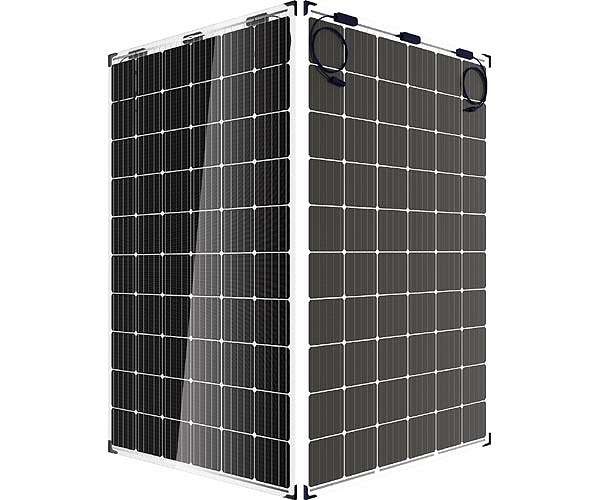Double glass solar modules, also known as bifacial modules, are a type of photovoltaic panel that differs from traditional solar panels in that they have glass on both the front and back sides. This design offers several unique characteristics and advantages.
- Bifacial Energy Generation: Bifacial modules can capture sunlight from both the front and rear sides. This allows them to generate electricity not only from direct sunlight but also from reflected and scattered sunlight, such as light bouncing off the ground or nearby surfaces. This feature can significantly increase energy production.
- Enhanced Durability: The use of glass on both sides of the module increases durability and resistance to environmental factors. Double glass modules are less susceptible to physical damage, moisture ingress, and corrosion compared to traditional modules with a plastic backsheet.
- Improved Temperature Coefficients: Double glass modules often have improved temperature coefficients, meaning they can maintain higher efficiency levels at elevated temperatures. This can lead to better performance in hot climates.
- Longer Lifespan: The absence of a backsheet, which is prone to degradation over time, can extend the lifespan of double glass modules. Many manufacturers offer longer warranties on these modules as a result.
- Higher Efficiency: Bifacial modules can achieve higher overall efficiency compared to single-sided modules, especially in scenarios with good albedo (reflection) conditions, like installations over light-colored surfaces, snow, or water.
- Versatile Installation Options: Bifacial modules can be installed in various configurations, including on tracking systems, tilted mounting structures, or in vertical installations, to take full advantage of their two-sided light absorption.
- Low Soiling Impact: Because the rear side of the module can capture reflected light, double glass modules can tolerate some level of soiling or dust buildup on the front surface without a significant reduction in performance.
- Aesthetically Appealing: The glass-to-glass design often results in a sleek and modern appearance that some homeowners and businesses find attractive for architectural integration.
- Reduced Potential Induced Degradation (PID): The absence of a backsheet can reduce the risk of PID, which is a common issue in traditional modules where electrical potential between the cells and the ground can lead to performance degradation.
- Backsheet Replacement Not Required: Since there is no backsheet, there is no need to worry about backsheet-related degradation or replacement costs over the lifetime of the module.
It’s important to note that while double glass modules offer many advantages, they are also typically more expensive than traditional modules. The decision to use double glass modules should be based on factors like site conditions, installation cost, and the specific requirements of your solar project.


